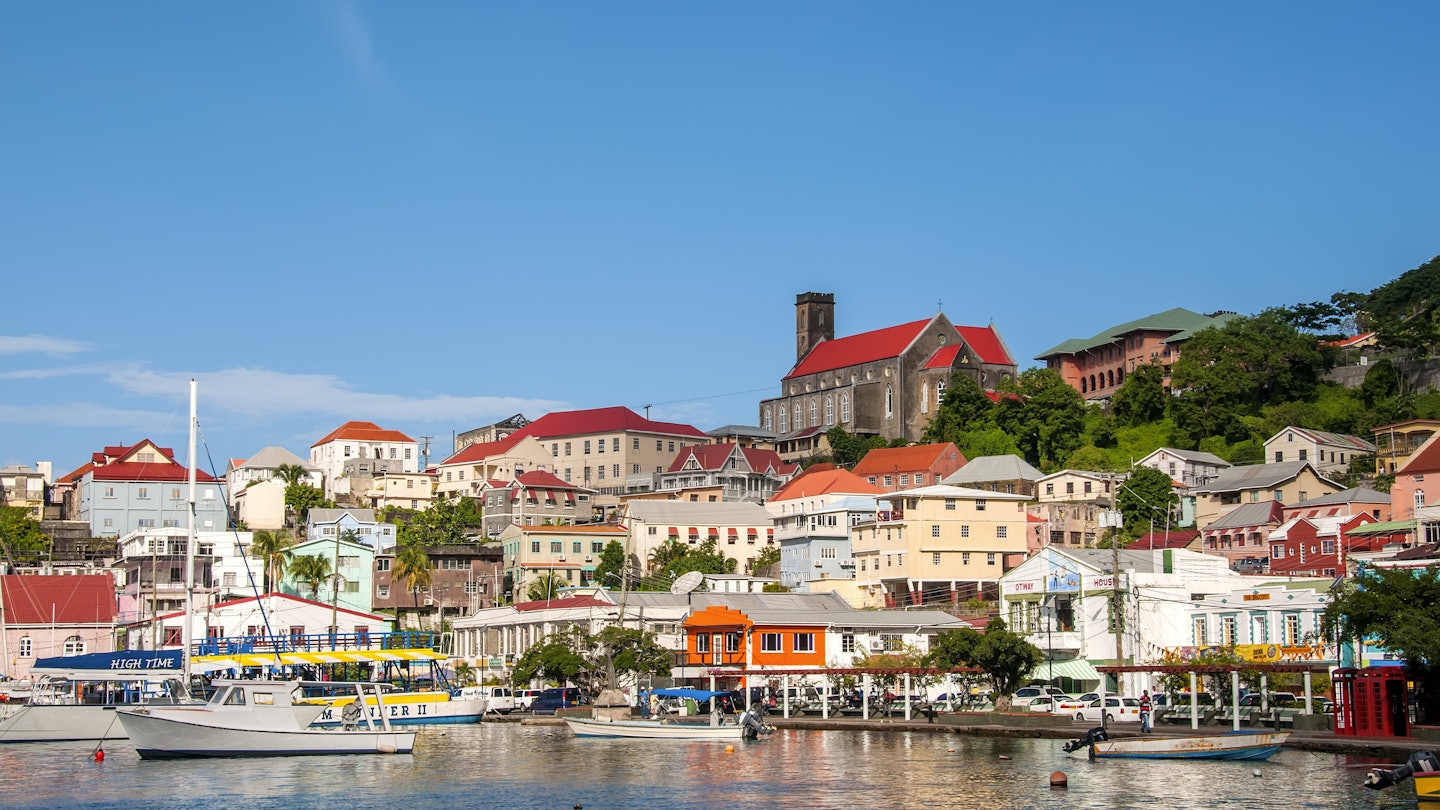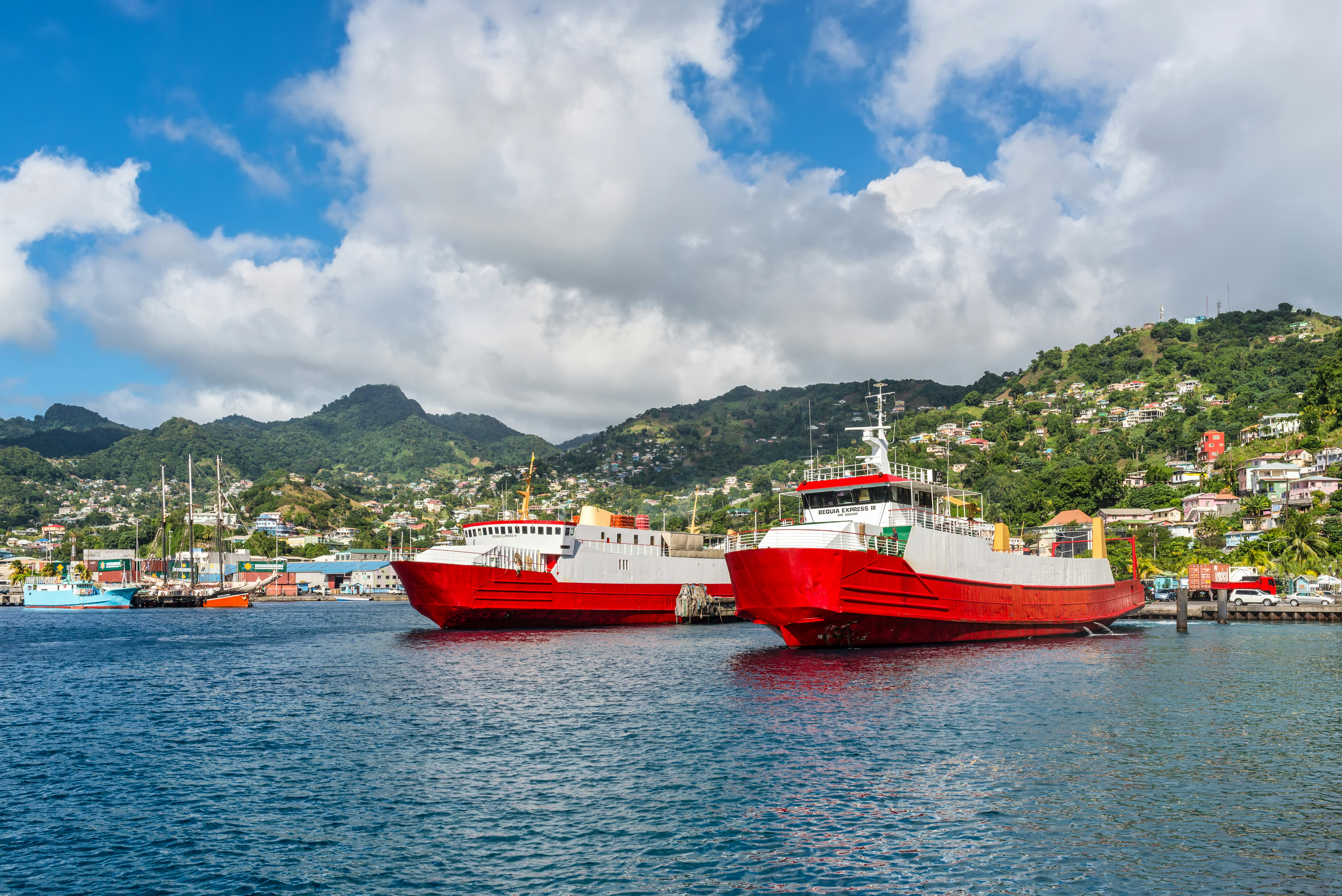

Try a ferry for island hopping in the Caribbean. M Timothy O'Keefe/Getty Images
For most travelers out there, you're probably treating the Caribbean the way you think you're supposed to: fly in, park yourself on one island, fly out. Fragmented airlift and maddening routes, like flying back through Miami or San Juan to reach the neighboring island, can make multistop trips feel costly and exhausting. But here's the not-so-secret workaround locals have always known: take the ferry.
In several pockets of the Caribbean, passenger ferries run like regional trains: regular, (mostly) on time and wallet-friendly. Yes, it's usually slower. But what you "lose" in flight time, you more than make up for in experience: salt spray, skyline views and conversations with commuters and cafe owners.
The commonly known St. Maarten is just the start. Ferries crisscross the Virgin Islands daily; high-speed catamarans stitch together Guadeloupe, Dominica, Martinique and St. Lucia; budget boats link Puerto Rico with Vieques and Culebra for just a couple of bucks; and long-running services connect St. Maarten with Anguilla, Saba and St. Barth. Let's not forget Trinidad and Tobago, and the ferries that make island-hopping in St. Vincent and the Grenadines a bit more budget-friendly. Taken together, they form an intricate, surprisingly reliable network that makes do-it-yourself island hopping not only possible but delightfully doable.

Key Ferry Regions & Routes
Below are the most practical clusters for building a ferry-only island-hopping itinerary. Schedules change frequently, so always reconfirm close to travel. But these routes operate with enough regularity to anchor a trip.
St. Maarten Hub
St. Maarten - St. Barth - Saba (plus Statia and St. Kitts) and Anguilla by public or charter boats
Why it works: St. Maarten is one of the Caribbean's best ferry gateways, pairing major international airlift with short boat hops to three wildly different islands: glamorous St. Barth, vertical little Saba and beach-blessed Anguilla. Edge Ferry (Aqua Mania Adventures) is one of the many ferry companies out of St. Maarten and runs scheduled high-speed trips to St. Barth (Monday, Wednesday, Thursday) and Saba (Tuesday and Friday); check-in is typically at 8 a.m., passports are required, and check-ins close 25 minutes before departure. The Saba run can be bumpy. Ask about sea conditions.
One-way tickets to St. Barth are $75. Day trip tickets are $100. One-way fares to Saba start at $75. Same-day round-trip tickets are also $100.
Makana Ferry Services is another ferry company that links St. Maarten with Saba, Statia and St. Kitts. One-way tickets start at $69.
Public & charter links to Anguilla leave from Marigot Port on the French side. Ferries run approximately every half hour to and from Marigot, and the trip takes an average of 25 minutes. You can also take private charters from the Dutch side with companies like Calypso, Great Bay Express, The Link and Funtime. Fares start from $65.

Virgin Islands Web
USVI - BVI (plus local BVI routes)
Why it works: Dense populations, short distances and strong local demand mean multiple daily boats link St. Thomas (USVI) with Tortola (BVI), plus connections onward to Virgin Gorda, Jost Van Dyke and Anegada. Services operate from both Charlotte Amalie and Red Hook on St. Thomas to Road Town and West End on Tortola; additional runs connect Tortola with Virgin Gorda and Jost Van Dyke, and inter-island BVI ferries fill in the gaps.
Ferry companies that offer service include Smith's Ferry, Native Son and Road Town Fast Ferry.
Good to know: Different companies rotate departures; arrive early to purchase/confirm tickets. A passport is required when crossing the US/British border. Some runs stop in St. John en route; double-check if you need to clear immigration there.
French Antilles Corridor
Guadeloupe - Dominica - Martinique - St. Lucia
High-speed catamarans operated by FRS Express des Iles (formerly L'Express des Iles) knit together four islands across three political systems, making this one of the most rewarding medium-range ferry spines in the Caribbean. Multiple fare classes include luggage allowances; service is year-round with varying seasonal frequency.
Each ferry runs five times per week. Capo Rosso is another ferry service between Martinique and St. Lucia.
The FRS Express also operates to St. Kitts and Antigua out of the French region, which gives the opportunity for connectivity.
Pro tip: Note that peak periods to visit St. Lucia are during the Jazz Festival, Carnival and Christmas. Tickets aboard the ferries sell out fast, so book early.
Puerto Rico Budget Hops
Ceiba - Vieques & Cieba - Culebra
For sheer value, nothing beats Puerto Rico's east coast ferries. Passenger fares from Ceiba to Vieques or Culebra aboard Puerto Rico Ferry start around $2-$2.25 one way for adults; seniors and kids are typically $1, and seniors 75+ ride free. Extra gear, like coolers, bikes and beach chairs, incurs small add-on fees.
Crossings generally take 30-45 minutes, but winter swells can affect schedules; arrive early, especially around holidays, and consider round-trip tickets to lock in space.

The Grenadines Chain
St. Vincent - Bequia - Canouan - Mayreau - Union - Carriacou - Grenada
Most travelers island-hopping in the Grenadines are doing so with luxury yacht charters, which can cost tens or hundreds of thousands of dollars. But the island chain is entirely doable by ferry for under $100. The Grenadines can be explored by hopping between islands on local ferry routes, though the journey requires flexibility. Be sure to build in buffer days for weather delays and transfer connections. Companies include Bequia Express, Union Island Ferry (MV Gem Star 2) and Fast Ferry (Jaden Sun).
Trinidad & Tobago Inter-Island Link
Trinidad-Tobago
Though domestic, the Port Authority of Trinidad & Tobago runs large passenger/vehicle ferries between Port of Spain (Trinidad) and Scarborough (Tobago) with the Inter-Island Transportation Company. It's a popular budget alternative to short flights and can be slotted into a larger southern Caribbean itinerary that continues by air or cruise. The journey takes about three hours, and fares start at $75 one way.
Practicalities: Tickets, docs, bags and seasickness
Book ahead, especially in high season: Operators across the region urge advance purchase. Some sell out days in advance, and check-ins close early so officials can clear immigration.
Passports and visas: Even for day trips, most cross-border ferries require a valid passport. Certain nationalities need visas to enter French territories such as St. Barth; a standard Schengen visa may not suffice, so verify before you book.
Arrive early: While delays still occur on occasion, the notion of Island Time in the Caribbean largely no longer exists. Showing up early/on time is even more important, as a ticket often does not guarantee a seat.
Sea conditions matter: Trade winds (aka "Christmas Winds") from November-April can make some runs — Saba or northbound legs in the Windwards — sporty. Sensitive stomach? Choose routes/days accordingly. Consider southbound travel or fly select legs.
Fill out arrival forms before docking: This speeds up processing on the islands.
Cash in pocket: Smaller islands and some ticket offices still rely on cash for fares and head fees.









